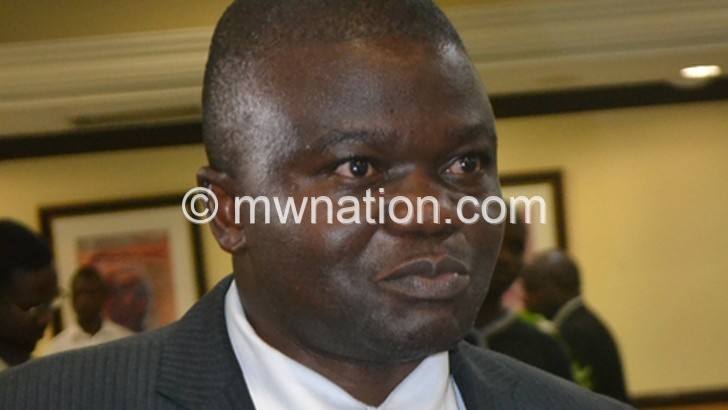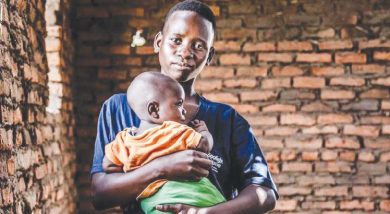Neno’s partner in health
When former president Bakili Muluzi split Neno from Mwanza in 2001, health facilities in the new district were few and far apart.
Actually, some people in Neno, whose population is almost107 000, used to walk long distances to seek treatment at Mwanza District Hospital.
The hilly district—which is only reached via bumpy, earth roads—had ancient government buildings and not much to write home about.
It was just a district on paper, the locals say.

Today, the story is different.
Challenges that used to impede people from accessing quality health services in time have been on the wane since 2006.
Then, former president Bingu wa Mutharika visited Neno in 2006 and rallied Partners in Health(PIH) to invest in uplifting the underdeveloped district.
A decade on, the international organisation’s support to the Ministry of Health has been phenomenal.
PIH has so far pumped almost $4.1 million (about K 3.2 billion) in various projects.
The milestones on this journey into the hard-to-reach hilly terrain include Dambe Health Centre and Lisungwi Rural Hospital.
Apart from the two facilities, PIH rebuilt Neno District Hospital and keeps investing in improving transportation of patients from remotest areas.
“There were no ambulances when we arrived here. Our organisation provided vehicles to carry the sick from the remotest parts to the district hospital,” says PIH executive director Luckson Dullie.
His organisation has contributed significantly towards uplifting the health status of the once maginalised population.
Minister of Health Peter Kumpalume speaks of massive transformation at the district hospital built around old buildings that used to be a mere clinic when Neno was part of Mwanza.
He remembers his ministry was faced by immense challenges when Neno became a standalone district.
“Our challenges were enormous. As a new district, we had no hospital for critical patients referred from rural health centres. Our health centres were in bad shape,” he says.
Interestingly, Neno is among modern district hospitals in the country with state-of-the art medical equipment.
Neno District Hospital has magnificent maternity and gynaecological wards.
“Issues of maternal health are important as we strive to reduce the numbers of pregnant women dying and to provide decent facilities to our mothers,” says Kumpalume.
Before the health facilities were built, people used to endure long distances to access life-saving services.
“During rainy season, mobility was difficult. Pregnant women used to deliver under candlelight or lamps at the clinic which has been expanded to a district hospital,” says Dr. Emily Wroe in an interview.
Away from the centrally located hospital, Dambe and Lisungwi facilities put health services closer to rural communities where the disease burden and unmet demand are high.
Dambe Health Centre is situated in Chilim’bondo, almost 20 kilometres north of the district hospital.
Clinical officer Titus Nkosi and his team serve thousands from 17 villages in the remote setting on the border between Malawi and Mozambique.
Chilim’bondo villager Ethel Kasamba, 35, praises PIH for the hospital, saying the sick no longer spend hours walking to Neno.
“I have a small child and I do not take the tiresome trips to Neno to get under-five services. I just come here with my baby,” she says.
Since it was opened in April 2016, Dambe Health Centre has assisted almost 10 000 outpatients.
Almost 8 000 people have undergone screening for chronic conditions, including HIV infections and hypertension.
Lisungwi, about 10km from Neno Turn-off, is complete with a warehouse and a pharmacy.
In 2006, only eight people in Neno were on antiretroviral drugs, but the number has jumped to over 8 000 within 10 years.
“We also have successfully treated 297 patients with skin cancer using chemotherapy,” says Wroe.
According to Kumpalume, Neno is also a star performer when it comes to community health services.
The ministry will replicate lessons from Neno to the rest of the country, he says.
So far, health workers have screened over 15 000 clients in remote areas for high blood pressure, tuberculosis and other common conditions.
The district receives visiting doctors from different parts of the world to reduce the workload of the country’s overwhelmed health workers.
“I appreciate the contribution of additional nurses, clinical officers, laboratory personnel and other workers who complement the staff in our health facilities,” Kumpalume says.
This is why district health officer Lawrence Nazimera commended for “10 great years of rebuilding and redefining health in Neno”. n





